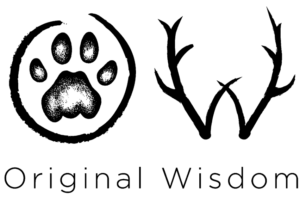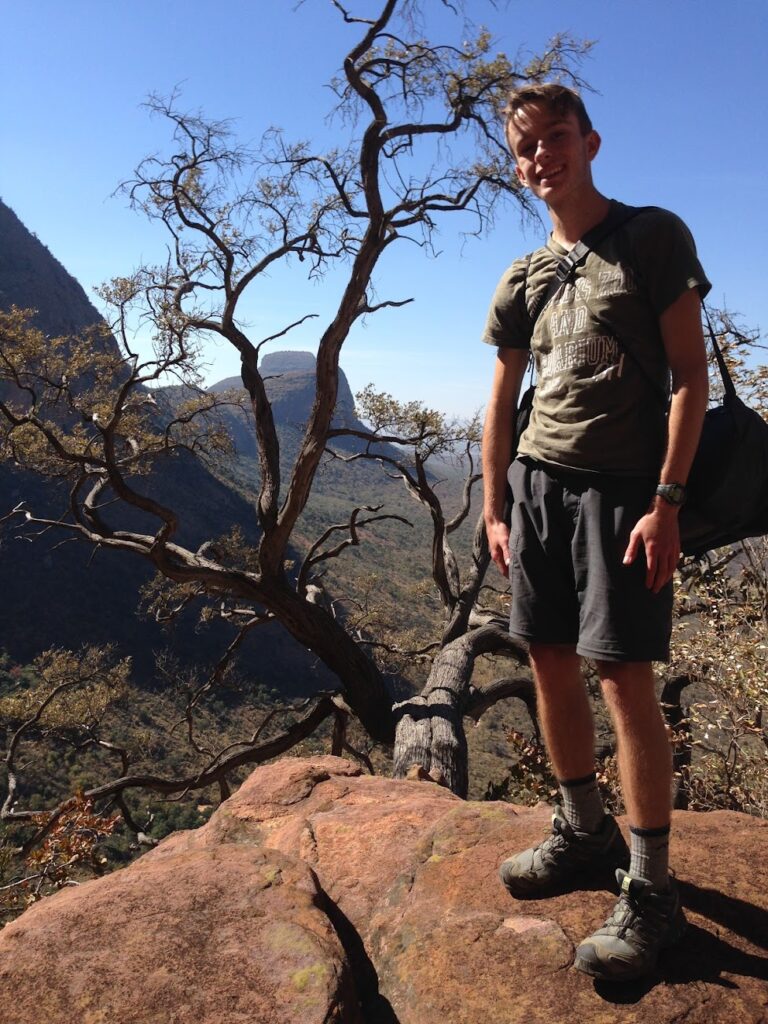The following blog post is created by a Hopkinton/Bow High School student from New Hampshire, who is on program with Original Wisdom, partnering with Nature Guide Training, on a 3-week South African Ecology & Culture program at Djuma Game reserve in the Sabi Sands region of the Greater Kruger Area (July 2015). In addition to exposure to ecology and culture, we have sponsored a local South African student on scholarship for the entire program (see Blog 3# Interview with Mhlavasi) and will attend 2 days at Mhlavasi’s school, Acorns to Oaks, where our students interact with the local students and help to teach them some basic skills in spatial thinking and use of Geographic Information Systems (GIS) to create online maps and stories with a spatial component. Our overall goals include facilitating connections with self, others, and the natural world.
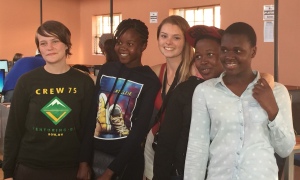
Michelle Neal
July 13th + 14th, 2015
Days 12 + 13

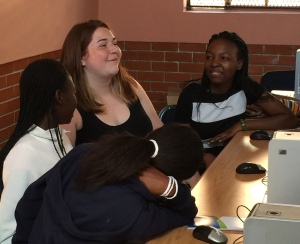
Bright and early Monday morning, a bus hired from the South African Wildlife College greeted our group at the Sabi Sands Gowrie gate – our entrance and exit portal to Djuma Game Reserve. One very bumpy hour later, we arrived at Acorns to Oaks private school. “I’m nervous,” said a smiling Gaby, “it’s like the first day of high school all over again!”
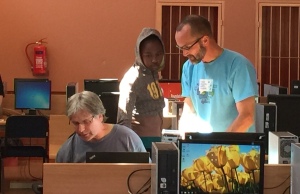
About twenty-eight local students (or learners as they’re called in South Africa) travelled to school fully willing to sacrifice two days of their winter vacation to learn about spatial thinking, and to, “meet American students!” Mr. Semmens and Mr. Duhaime held the bulk of the lessons that guided the course, with Kersey jumping in with stories to put things into perspective, occasionally, and all of us Hopkinton and Bow students standing by, at-the-ready, to assist all the learners. We used ESRI’s ArcGIS desktop software (see earlier blog “Interview with Mhlavasi”) as well as an online subscription account that Scott and Kersey had spent two days installing on about thirty-seven of the computers in their computer lab before our arrival. We hoped to use the software to strengthen the students’ connection to their environment and provide skills that are of extremely high value in a large variety of career fields.

The first day was met with technological difficulties with the wifi that greatly stalled our plans. T.I.A. = This Is Africa. Luckily, if our group has learned anything throughout this course, it’s adaptation. We set to work socializing and sharing cultural differences with the students, discussing our experiences on the game reserve, and adjusting the computers as needed to find some functioning aspects.
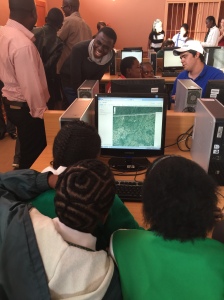
We managed to have a couple desktops properly display the maps we wanted. Acorns to Oaks students crowded around the screens, giggling and pointing at the satellite image of their school. Some located their homes on the map, others observed the software’s power in awe as we zoomed into our own houses in the USA and on places like New York City and Hollywood that they recognized the names of but had only imagined.
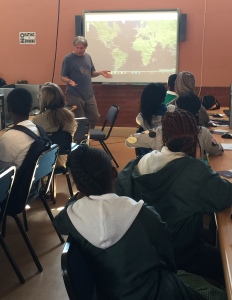
Mr. Semmens led us all in describing the route taken from his house in New Hampshire, to Logan airport in Boston. To JFK airport in New York, to Amsterdam, to Johannesburg, to Djuma, and finally to Acorns to Oaks.
While we did not accomplish all that we had hoped technologically (the wifi could not support so many computers on the internet all at one time) many of us began to develop what would perhaps be lifelong friendships with the South African students. At one point, Gabby sat surrounded by several young Shangaan ladies who braided her hair into traditional corn-rows while they discussed, what else: boys. They thought that one of our classmates was, “hot,” and they wanted him to be their boyfriend. And Gabby asked them if that was all they looked for in a boyfriend, to which they relied, “well, what else is there? What do you look for?” Gabby explained that she wanted someone with common interests, someone she could talk to, and someone who loved her. The girls all looked at Gabby and exclaimed about how wise and how right she was, and that those were good things to care about in a boyfriend – the day turned into a huge bonding experience and exchange of cultural values, with a brief introduction to a little bit of spatial technology and thinking thrown in – a huge success!
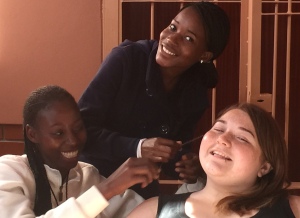
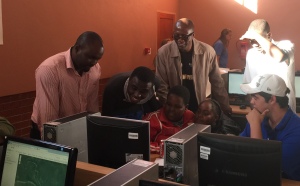
The second day we returned with new determination to cover more of the material that could provide theses learners with valuable job skills. We arrived a little bit early to the school and determined which computers worked best running the software, and limited our use to only ten stations, which we gathered around. Mr. Semmens spoke of the importance and value of geospatial thinking, and the students from both South Africa and the USA listened intently. Mhlavasi told us that she had never seen her classmates pay so much attention to a teacher or a lesson.
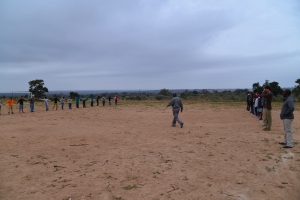
From there, everyone shuffled outside to an open field to practice using a GPS and understand latitude and longitude. It was a beautiful activity where to extremely different cultures collaborated flawlessly to map out the area. At the end we captured the moment with a couple group pictures in the soccer goal.

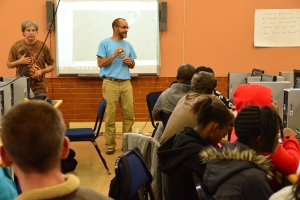
Back in the classroom, students created maps on paper of their journey from home to school (for Acorns to Oaks people) or from Djuma to the school (for the Americans). The maps were the compared to those on the software. Mr. Semmens and Mr. Duhaime finished our visit with a walk-through of basic tools and skills on ArcGIS using the real data, supplied by Panthera, of lions and leopards in Djuma. The learners happily absorbed the almost magical information.
After an extensive round of photos and email address exchanges amoung us all, we said our goodbyes and headed home to Djuma. Mhlavasi radiated joy after seeing her friends, but was a bit sad to say farewell again.
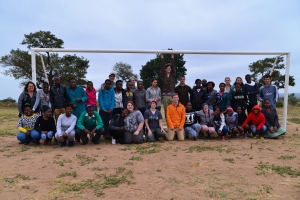
When we returned to camp, I asked a couple group members what they thought of the experience.
“I’ve never seen my classmates so focused in the classroom before. Usually they are distracted with talking, technology, or anything else; but today they were quiet and actually interested in what we were learning.” –Mhlavasi
“We walked into the [class]room and it was all smiles and concentrated learners.” –Kersey Lawrence
“Even the smallest amount of progress makes a huge difference in these children’s lives.” –Scott Semmens
“I thought it was exciting and invigorating to see how eager and happy the kids were to learn.” –Sam Pepin
“They’re all so happy, even when they have so little.” –Declan Campbell
SEE BELOW FOR MORE PHOTOS
Original Wisdom and Nature Guide Training have embarked on what they hope will be a long-term relationship with the teachers and learners at Acorns to Oaks, and Hopkinton and Bow High Schools (particularly Mr. Semmens and Mr. Duhaime) were an integral part of this. They are already in discussion with the school, and other schools, about how to best continue the learning throughout the coming year and in the many years to come. As students ourselves, we are hopeful that we’ve made some sort of difference in these South African students’ lives, and I truly believe we have. But even more significantly, these wonderful people have made a difference in our lives. Whether it’s the fantastic collaboration, the unconditional kindness and positivity, or the exchange of information about cultural differences and personal similarities, we will never forget our time with Acorns to Oaks.
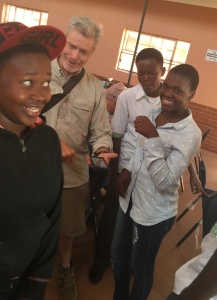
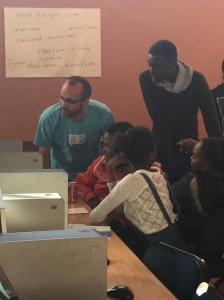
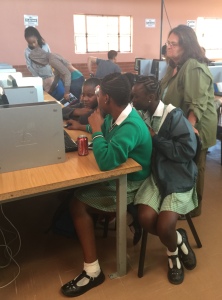
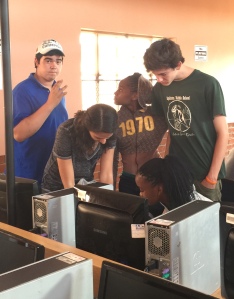

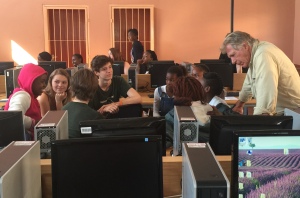

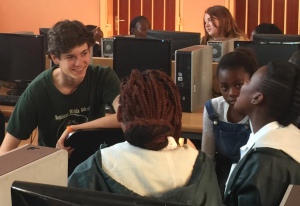
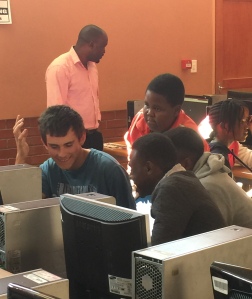
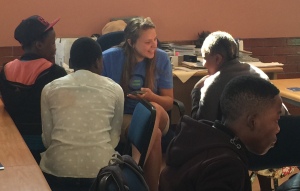
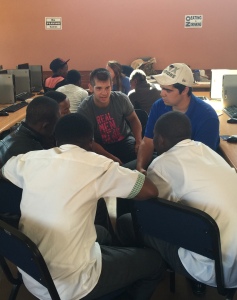
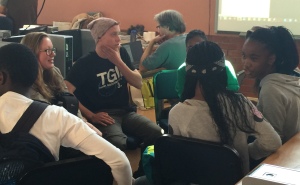
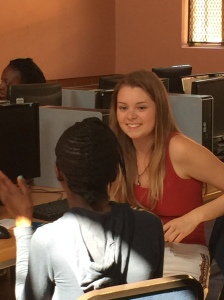
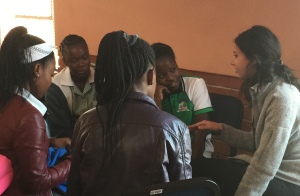
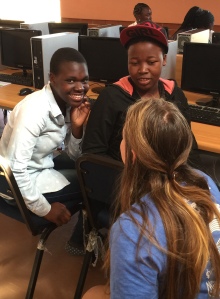
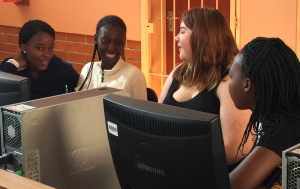
Edited by Kersey Lawrence
